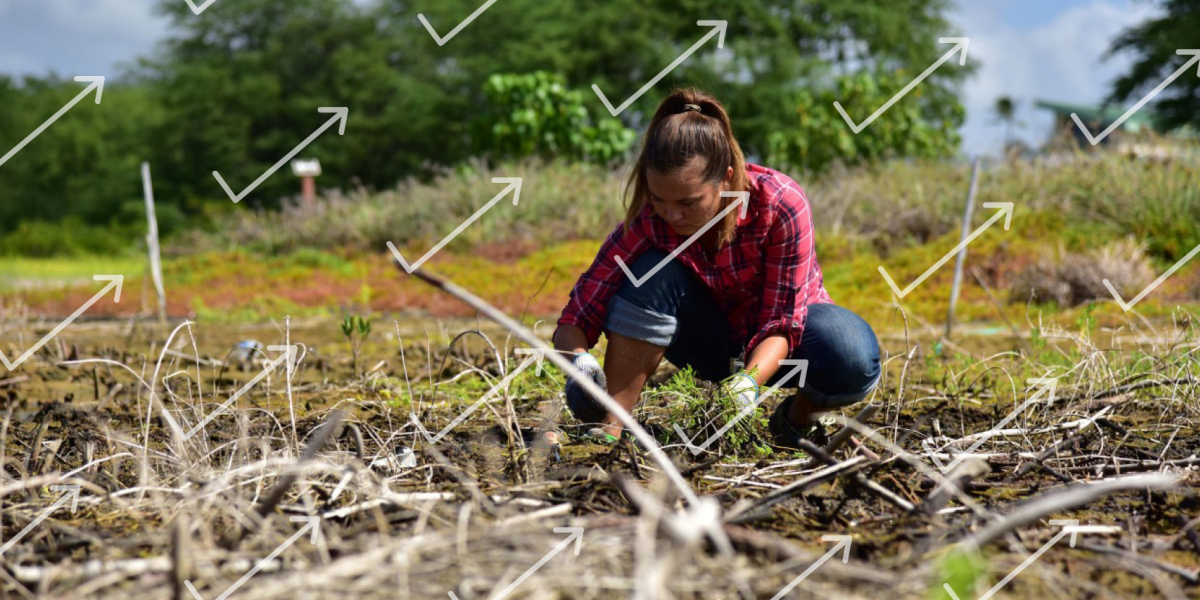
June 15, 2020
Guest post by Vanessa Nim & Michael Young
This post is part of Smart Prosperity Institute’s Smart Stimulus Project and supports the work of the Task Force for a Resilient Recovery. Want to receive our latest analysis and insights? Sign up for our monthly updates here.
As our economies gradually reopen and governments begin to focus on economic recovery post-COVID-19, a second crisis looms: climate change. Extreme weather events caused by climate change incur a heavy price tag as an estimated $5.3 billion per year is needed across Canada to adapt our current infrastructure. Tackling both crises poses a challenge, but what if there was one solution to both?
Natural infrastructure offers just this. Wetlands, trees, grassed areas, and other green features help mitigate the impacts of climate change and are examples of natural infrastructure that provide quantifiable services to surrounding communities: preventing flooding, modifying temperatures, and purifying fresh water, plus many direct and indirect jobs. A report by the Federation of Canadian Municipalities (FCM) and Insurance Bureau of Canada (IBC), showed that natural infrastructure provides a 6:1 return-on-investment: for every dollar invested in climate-resilient, natural infrastructure, six dollars is saved in future damages. And another study, by the Green Infrastructure Ontario Coalition, found that Ontario’s green infrastructure sector contributed $4.64 billion in direct GDP and more than 120,000 jobs.
Natural Infrastructure as Smart Stimulus in Action
A recently launched project by the Greenbelt Foundation in partnership with Municipal Natural Assets Initiative (MNAI) highlights the benefits of natural infrastructure management for municipalities. By formally accounting for and investing in these natural assets, municipalities can save on grey infrastructure costs, improve their resilience to climate change, and create stable, full-time jobs for local workers.
The partnership, started in 2018, is geared to making natural asset management a mainstream practice for municipalities across the region. Recently, the Foundation announced a flagship milestone within this broader initiative.
The Greenbelt Foundation and MNAI, working closely with Mayor Meed Ward of Burlington, Mayor Eisenberger of Hamilton, Conservation Halton, and Royal Botanical Gardens, announced a groundbreaking natural asset management strategy for Halton Region’s Grindstone Creek watershed, which originates in wetland areas above the Niagara Escarpment and drains an area of 91 km2. This project involves a site-specific evaluation of the watershed for its function and infrastructural capacity. The outcomes of the evaluation and subsequent management strategy will lead to restoration initiatives, improvements in the health of the creek, minimized flood risk for local communities, and reduced phosphorous loading in Hamilton Harbour.
“There is growing evidence that healthy natural assets provide local governments with core infrastructure services such as stormwater management—sometimes at lower capital, operating, maintenance, and renewal costs—than engineered alternatives, and often with numerous other benefits,” says Roy Brooke, Executive Director for MNAI. “Understanding, valuing, and better-managing nature’s role in providing infrastructure services could play an important part in helping local governments recover from the pandemic.”
Investing in natural infrastructure has other added benefits:
A recent study shows that natural infrastructure is an increasingly important and valuable economic asset. This assessment by the Green Infrastructure Ontario Coalition, funded by the Greenbelt Foundation, shows that Ontario’s green infrastructure sector contributed $4.64 billion in direct GDP in 2018. That’s 28% more GDP than the pharmaceutical and medicine manufacturing sector, and 31% more than the computer and electronic manufacturing sector. Including indirect and induced impacts, the green infrastructure sector was responsible for more than 120,000 jobs in 2018.
As Canada looks for ways to begin economic recovery post-pandemic, as well as protect the economy from the future costs of climate change, it is important to find solutions that offer a win for both. Greenbelt Foundation CEO, Edward McDonnell weighs in on this: “Given the strain COVID-19 is putting on Ontario’s economy and workers, it is more important now than ever to find cost-effective solutions to the impacts climate change is having on our communities. When managed properly, natural assets like Grindstone Creek can play a critical role in protecting residents and their property from flooding, saving municipalities money and providing much-needed jobs in planning, design, and construction for local workers.”
By investing in natural infrastructure and natural asset management, like that undertaken at Grindstone Creek, we can create stable, full-time jobs for local workers and save municipalities money now, while also protecting ecological assets and offering relief to municipal budgets for a smart, clean future.
Vanessa Nim & Michael Young are with the Greenbelt Foundation, which works to ensure Ontario’s Greenbelt remains permanent, protected and prosperous.
The Municipal Natural Assets Initiative, of which Smart Prosperity Institute was a convening partner, aims to equip local governments across Canada with the tools needed to identify and account for natural assets. For more information, please click here.